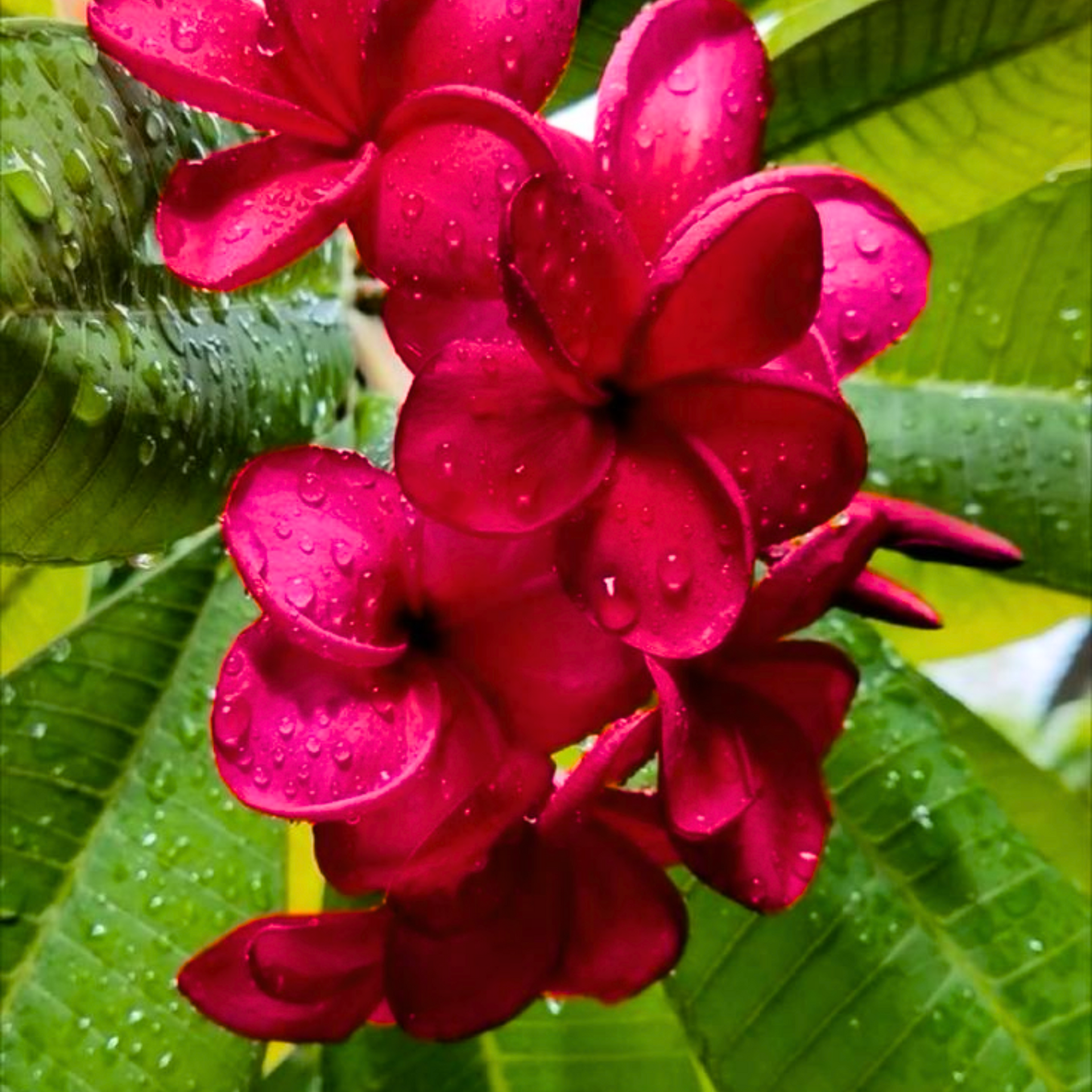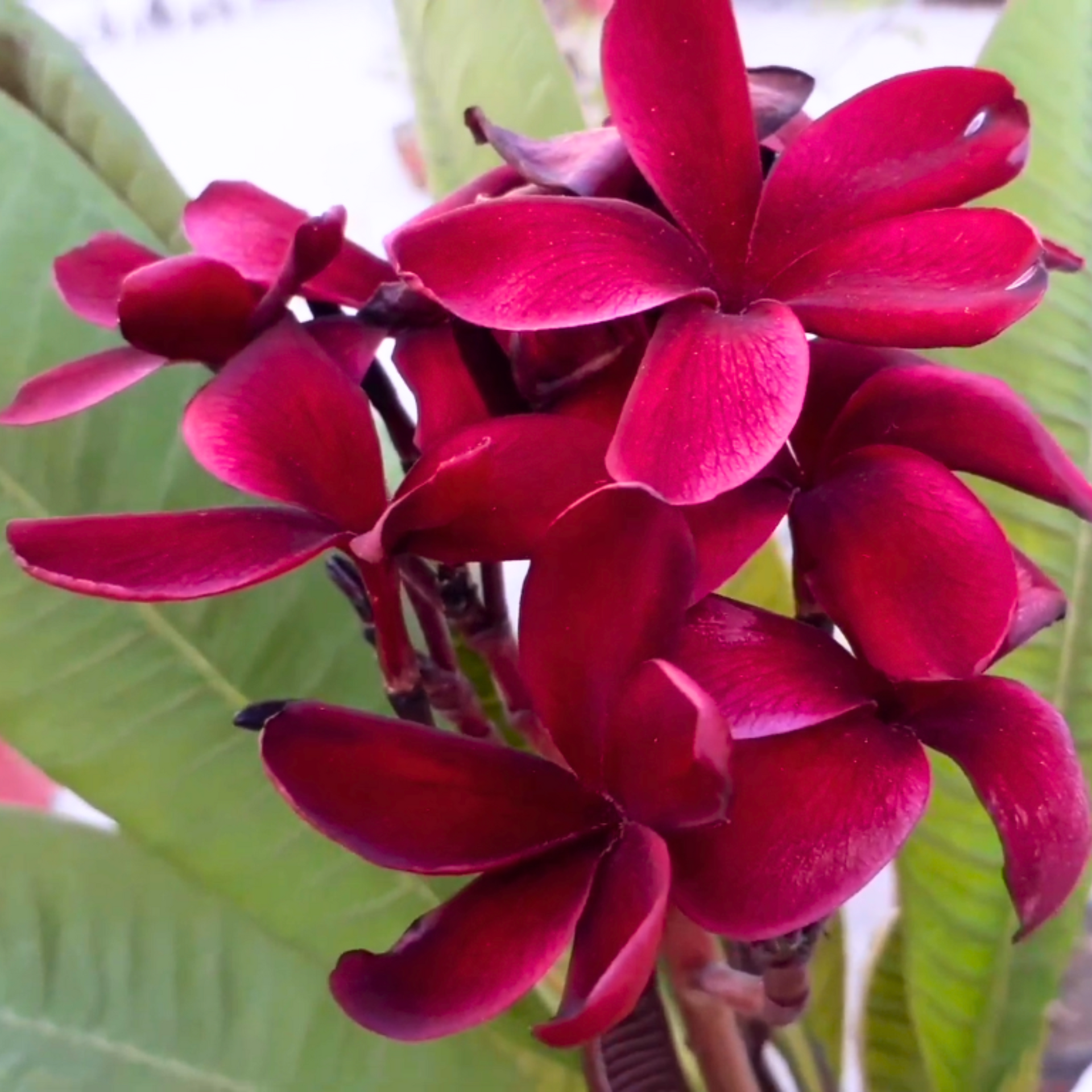



Green Paradise Red Plumeria Live Red frangipani Live Red Champa Plant
Guaranteed Safe Checkout
Unveiling the Allure of the Red
Plumeria Plant
The world of horticulture is a canvas painted with a kaleidoscope of colors and forms, each plant a stroke of nature's artistic genius. Among these botanical masterpieces, the Red Plumeria stands as a testament to the beauty and diversity that our natural world has to offer. In this article, we'll take you on a journey through the enchanting realm of the Red Plumeria, exploring its origins, characteristics, care, and the cultural significance it holds.
A Glimpse into the Origins
- The Red Plumeria, scientifically known as Plumeria rubra, is native to Central America, Mexico, and Venezuela.
- Its name pays homage to Charles Plumier, a 17th-century French botanist who was captivated by the plant during his travels.
- This tropical beauty belongs to the Apocynaceae family and is often referred to by several other names, including Frangipani, Hawaiian Lei Flower, and Temple Tree.
Radiant in Red
- The Red Plumeria is renowned for its stunning flowers, which range from delicate pastel pinks to vibrant reds.
- These five-petaled blossoms, often with a yellow center, are known for their captivating fragrance, making them a popular choice for leis in Hawaiian culture.
- The leaves of the Red Plumeria are glossy and deep green, creating a beautiful contrast with the vibrant flowers.
- Its growth habit varies, from shrub-like to small tree-like, depending on the growing conditions and pruning.
Caring for Your Red Plumeria
Cultivating a Red Plumeria requires a touch of patience and care.
Here are some essential tips to ensure your plant thrives:
Sunlight:
Plumerias adore sunlight. Plant them in an area where they can receive at least 6 hours of direct sunlight daily.
Well-Draining Soil:
Plumerias prefer well-draining soil. A mixture of potting soil, perlite, and sand works well for potted plumerias.
Watering:
While they appreciate consistent moisture, plumerias should not be overwatered. Allow the soil to dry among waterings.
Fertilizing:
Use a high-phosphorus fertilizer to promote flowering, but only during the growing season (spring and summer).
Pruning:
Prune your plumeria during the dormant season (winter) to shape the plant and encourage new growth.
Protection from Frost:
If you live in a region with cold winters, consider growing your Red Plumeria in a container that can be brought indoors during the colder months.
Cultural Significance
- The Red Plumeria holds deep cultural significance in various parts of the world.
- In Hawaii, it's the traditional flower used to make leis, symbolizing everything from love and friendship to grace and beauty.
- In many Asian cultures, the plumeria is associated with temples and is planted in their courtyards for its fragrant blooms.
Cultivating the Beauty: A Guide on How to Grow Red
Plumeria Plants
The allure of red plumeria plants lies in their vibrant blossoms and exotic fragrance, evoking images of tropical paradises. Also known as Frangipani, these striking plants are surprisingly easy to grow, even for those with limited gardening experience. In this comprehensive guide, we'll walk you through the steps to successfully cultivate and care for your own red plumeria, bringing a touch of the tropics right into your backyard.
Choosing the Right Location
- Selecting the perfect spot for your red plumeria is the first crucial step.
- These plants thrive in full sunlight, so pick a location that receives at least 6 to 8 hours of direct sunlight daily.
- To avoid root rot, they also prefer well-draining soil.
- Consider planting them in a raised bed or using a pot with drainage holes to ensure proper water drainage.
Preparing the Soil
- Red plumeria plants aren't too fussy about soil type, as long as it's well-draining.
- However, they do appreciate a slightly acidic to neutral pH level (around 6.5 to 7.0).
- You can amend your soil with compost to improve its texture and fertility.
- Mix in organic matter to enhance water retention without sacrificing drainage.
3. Planting Your Red Plumeria
- Planting red plumeria can be done in pots or directly in the ground, depending on your climate and preferences.
- If planting in a pot, choose one that's at least 12-18 inches deep to accommodate the plumeria's extensive root system.
- Check for drainage holes in the pot.
Planting in the Ground:
- Dig a hole that's about twice the size of the root ball.
- Place the plumeria in the hole and fill it with soil, making sure the top of the root ball is level with the ground.
- Water thoroughly.
Planting in a Pot:
- Fill the pot with well-draining potting mix, leaving about 2 inches of space from the rim.
- Place the plumeria in the center and add more soil around it.
- Check for drainage holes in the pot.
Watering
- Red plumeria plants prefer slightly dry conditions.
- Water until redundant water flows out of the drainage holes.
- Overwatering can lead to root rot, which is one of the main challenges in plumeria care.
Fertilizing
- To promote blooming, use a balanced, water-soluble fertilizer with equal amounts of nitrogen, phosphorus, and potassium.
- Apply this fertilizer every 2-3 weeks during the growing season (spring and summer) and reduce feeding in the fall and winter.
Pruning
- Pruning is not strictly necessary but can help shape your plumeria and encourage more flowering.
- Before new growth emerges, prune in the late winter or early spring.
- Remove any dead or crossing branches and trim the tips to encourage branching.
Protecting from Frost
- Red plumeria plants are sensitive to frost and cold temperatures.
- If you live in a colder climate, consider growing them in pots so you can bring them indoors during the winter or provide frost protection.
Pests and Diseases
- Common pests like as aphids and mealybugs should be avoided.
- Insecticidal cleaner or neem oil painting can help manage these issues.
- Ensure proper air circulation throughout the factory to aid fungal conditions.
Enjoying the Blooms
- Red plumeria plants typically start to bloom in late spring or early summer and continue throughout the warmer months.
- The vibrant, fragrant flowers can be used in leis or simply enjoyed in your garden.
- Growing red plumeria plants can be a rewarding experience, as these tropical beauties add a touch of exotic elegance to any landscape.
- With proper care and attention, you can cultivate a thriving red plumeria that will delight your senses year after year.
- So, roll up your sleeves, get your gardening gloves on, and start growing your very own piece of paradise.




